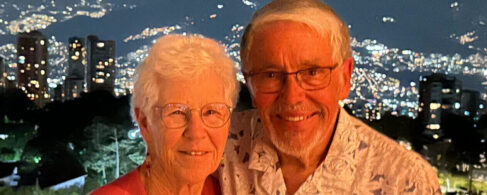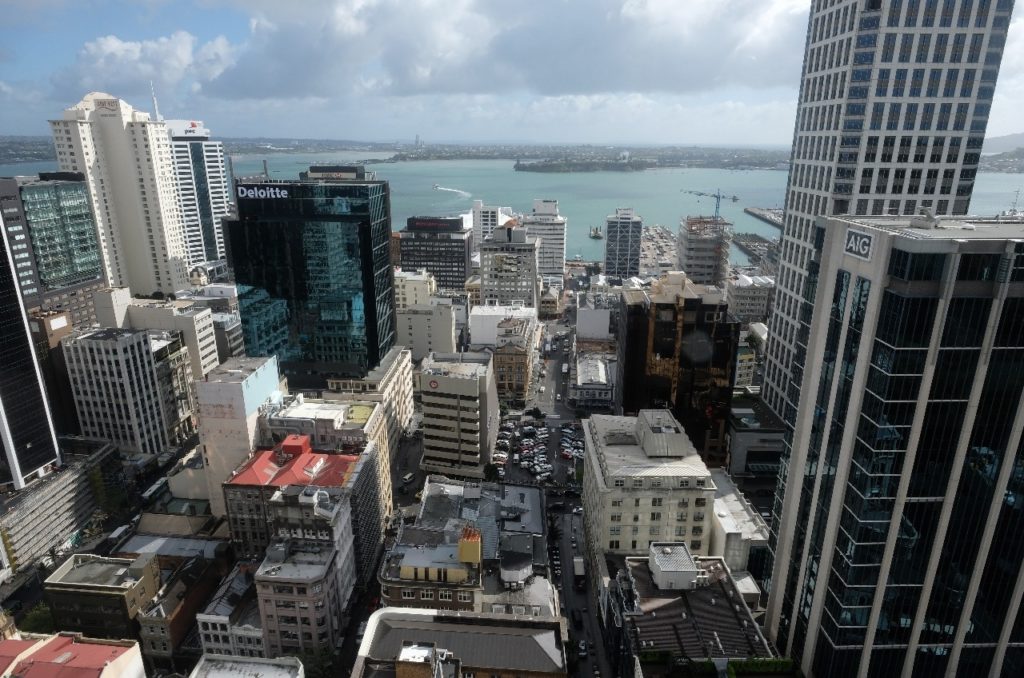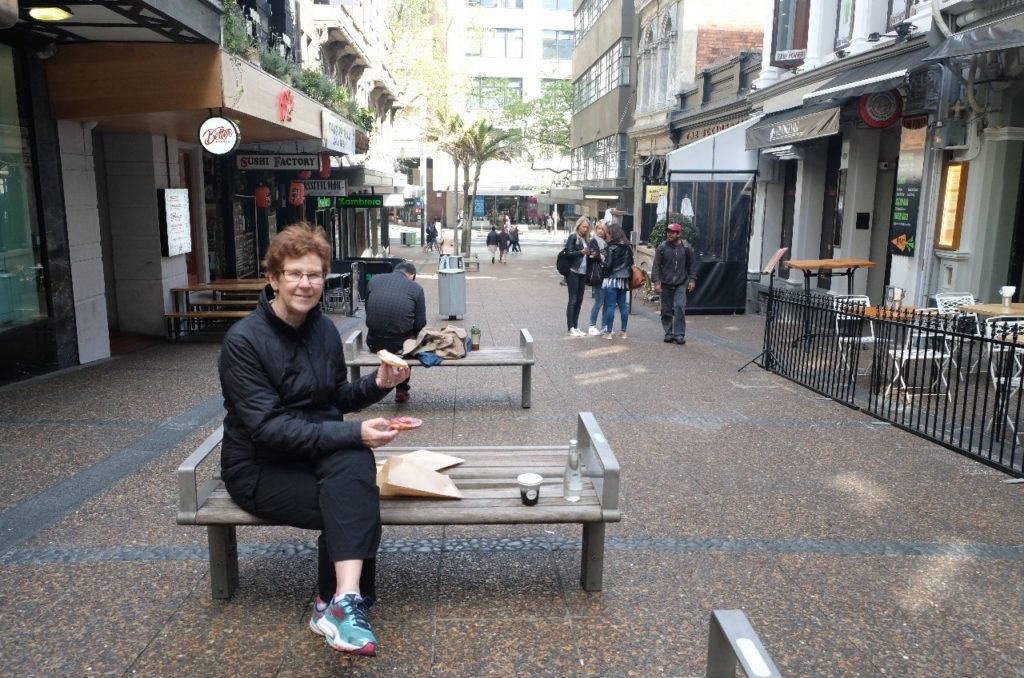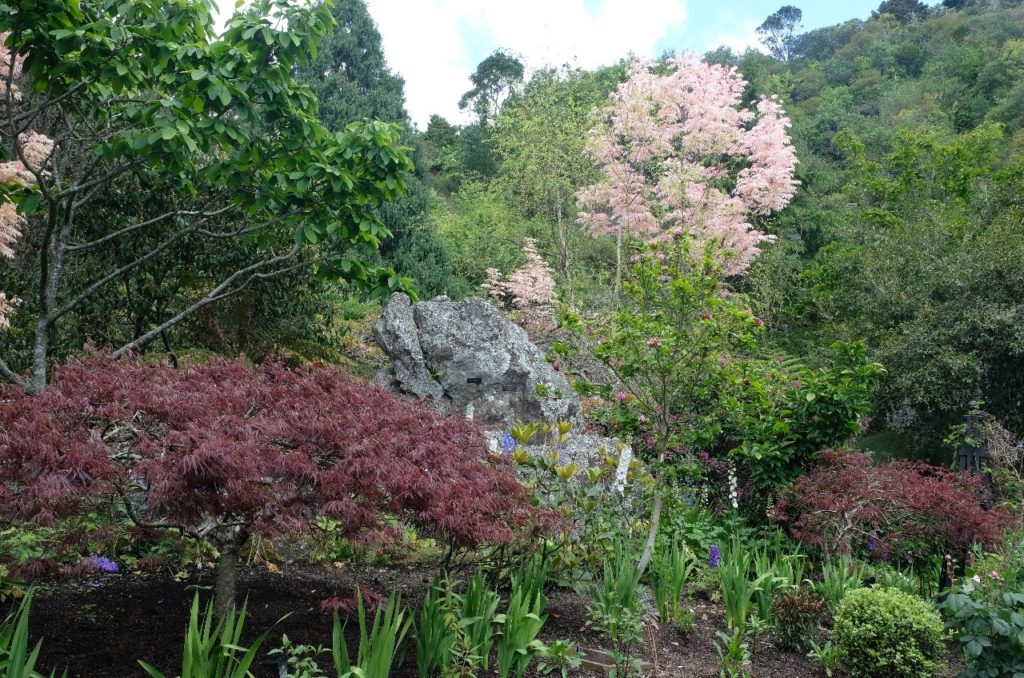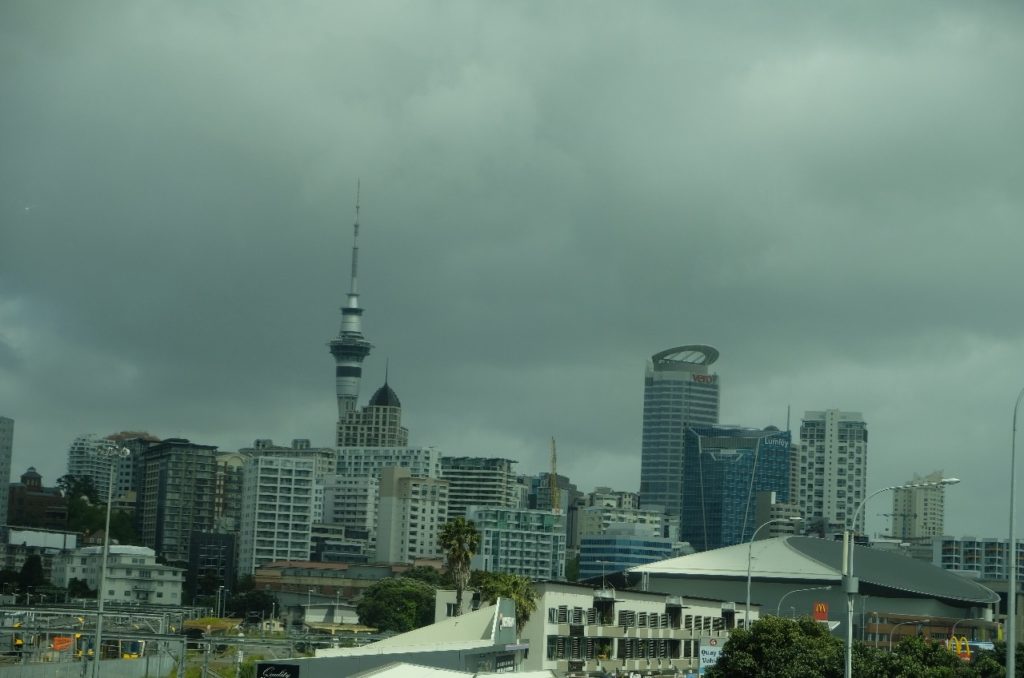Traveling for 14 hours in economy class is a pain in the you-know-what. And by that I mean that it really hurts to sit that long on a poorly-padded, narrow chair.
Other than that the flights were quite pleasant. Pretty much on time although we had to sprint to make the connection in Houston.
People ask us, “How do you stand a 14 hour flight? I just could never do it.” But you know what? It really isn’t all that bad. You just have to channel the inner couch potato that lurks inside each of us. What’s wrong with vegging out for 14 hours? Read a good book; watch a few movies; eat and drink; take before bedtime naps. Before you know it you’re there. Try it. Don’t let long airplane rides stand between you and your bucket list.
We planned our sleeping schedule so that we retired for the night at about 9 PM Auckland time, which was about 4 AM Windham time. We had a nap on the Boston-Houston flight. We cleared customs, caught the busses and finally found our hotel about 9 AM. We felt well enough to tackle a full day out on the tourist trail so the plan seems to have worked (thanks, Jeff for the idea. We’ll probably crash and burn tomorrow and as I type this at 5:30 PM Judy’s down for a nap and I’m feeling it too. A quick bite to eat and then we’ll call it a day early.
Finding the hotel turned out to be an adventure. We figured on a three-block walk from the bus stop to the hotel. What we didn’t figure on was the construction project that pretty much obliderated Courthouse Lane. Three locals, including an Office Max delivery guy, didn’t have a clue. But a nice lady took us right to the hotel. Nice folks, these Kiwis. Our room is in an apartment high rise (we’re on the 30th floor). A company has purchased a number of units and rent them out as hotel rooms. We have a beautiful view of the city and waterfront and it has all the features of a good downtown city hotel. The price isn’t bad, either ($100-ish U.S.)
We came to New Zealand interested in the Maori people and their culture and their relationship with European-descended New Zealanders (Pakeha, as the Maroi call them). We expected to dive into this subject later on but our education started on the flight from Houston and continued during the day.
First, we watched videos on the plane of the recent rugby Test matches between our beloved All Black team and the arch rival Australian Wallabies. Rugby is a religion in New Zealand and it’s not hard to become a fan, even if you don’t quite know what rugby is all about. My interpretation of rugby is that rugby is to American football (not soccer) as collegiate wrestling is to Cagematch professional wrestling. The basic idea is to move the ball across the other team’s goal line. Kicking is involved. The action never stops except for penalties. And the penalties have nothing to do with kicking, gouging and other forms of mayhem and personal injury actions, all of which seem to be perfectly normal . Penalties seem to be highly technical and I never did figure the logic, if any, behind them.
But I digress. Before the match started, the New Zealand and Austrailian national anthems were sung. The New Zealand anthem was sung first in Maori and then English. The players all new the words to both versions and sang them with great gusto and emotion.
And then the most amazing thing: the All Black players performed a Haka – a Maori ritual war dance designed to align the warriors with the spirits, to bring them into a state of physical readiness and, judging from the Wallabies’ reaction, to strike fear in the hearts of the opponents. Really a spectacular display.
We stopped at the Auckland War Memorial Museum. The Boar War and World War I are highly important in New Zealand’s history and indeed a good part of the museum is devoted to these conflicts. But an even bigger and more prominent part of the museum is given over to Maroi culture. We attended a Maori Cultural performance, which involved traditional Maori signing and dancing, including the finale: a Haka.
After the performance we chatted with one of the ladies who had performed, perhaps the leader of the six-person group. I asked her about how Maori people fit into New Zealand. She said that recently there had been great progress in establishing Maori culture within New Zealand, but that it had been a long, hard struggle. The British, in the treaty of Waiting (1840), took away soverenty from the Maoris, who had been on the islands for 600 years or so before the arrival of Abel Tasman in the seventeenth century. In return the Maori were granted the right to own land. But of course the treaty didn’t work out well for the Maori (the treaty written in Maori didin’t agree with the English version, for example). It’s implementation favored the Brits, as was often the case in the Empirial Age.
I asked her if the Maori language was being preserved. She said that language preservation was a problem but that progress was being made. There is a move to require Maori language instruction in the primary grades. She hereself attended a Maori language immersion school for all 13 years of her public schooling (she speaks excellent English).
So the tentative indication: Maori culture is apparently becoming recognized, respected and maybe even encouraged. We’ll hold final judgement until we’ve completed our travels.
Our journey today took us on the Hop-On-Hop-Off bus. We hopped off at the Museum, Eden Gardens and Mt. Eden. The bus ride itself took two hours on two intersecting loops. We spent the most time at the museum, including lunch in its pricy restaurant. Eden Gardens (botanical plantings in a reclaimed quary) and Mt Eden (a run up the hill to the highest pont in Auckland, featuring a huge crater) took exactly 30 minutes each so that we didn’t miss the bus.
Tomorrow we’re off on a ferry boat to explore an island.
